Using dashi powder is the easiest and quickest way to make Japanese soup stock or add flavor to a dish. Sprinkle the dashi powder over the food while cooking, or stir the contents into water for instant dashi broth.
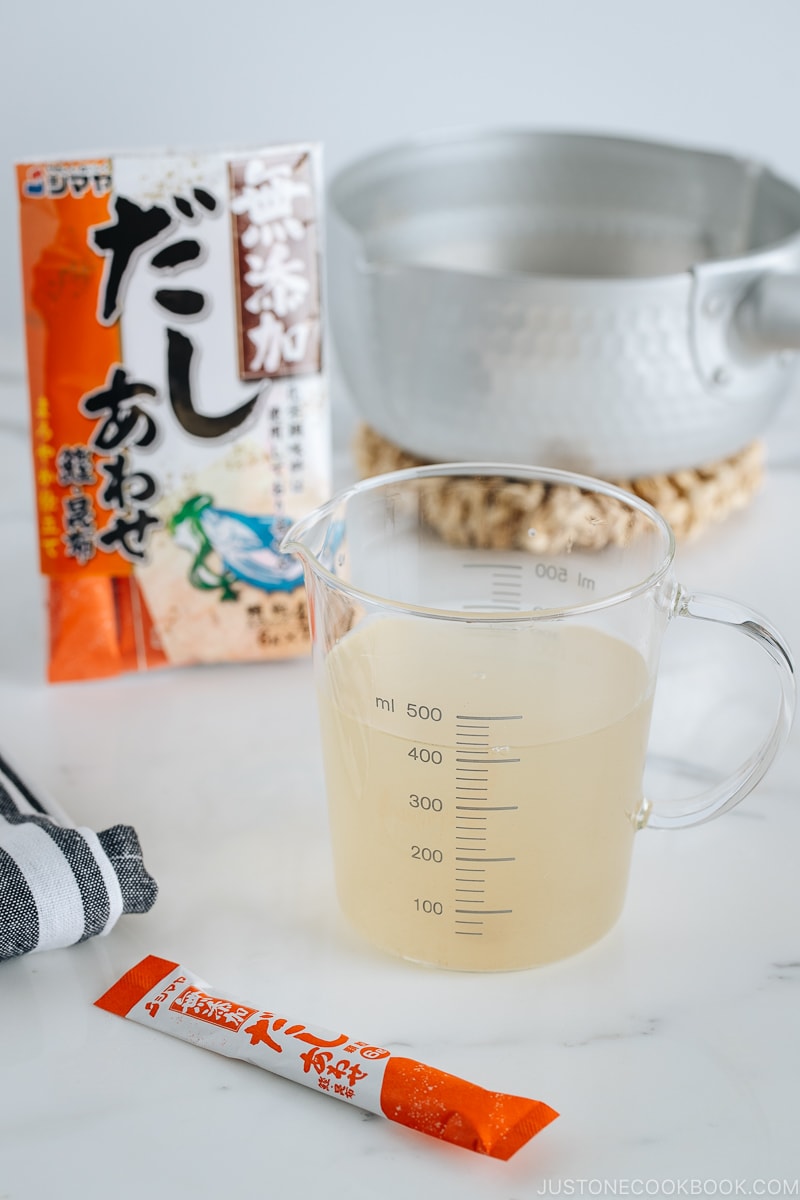
Dashi Powder (粉末だし) is Japanese soup stock in granules. It’s the easiest and quickest way to make dashi soup stock, as you can sprinkle the powder into soup and dishes while cooking. Prepping is not required, and it’s instant! It’s full of umami flavor and will add a depth of flavor to your dish.
Use instant dashi powder for noodle soups like soba and ramen, as a base for hot pot dishes, or to add a savory flavor in cooking.
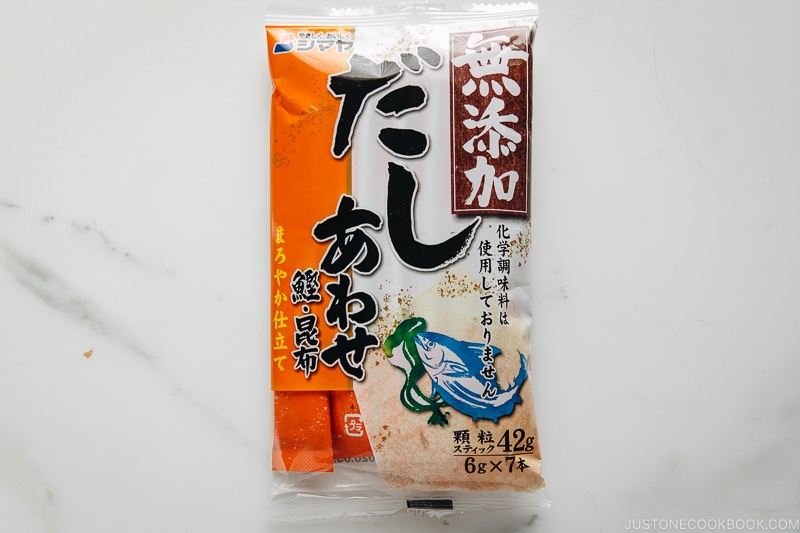
Which Dashi Powder To Use?
I like the Shimaya brand’s additive-free dashi powders, which are available at Japanese grocery stores or on Amazon (kombu + bonito or kombu (vegan)). However, you probably can’t find these imported packages in most Asian grocery stores.
Some Japanese words that might be helpful:
- 無添加 = “additive-free”
- 化学調味料は使用しておりません = “MSG-free”
Also, depending on the brands, the ingredients include dried bonito powder AKA katsuobushi, oyster extract, tuna extract, kelp extract, and other natural flavorings.
What Is Hondashi?
Hondashi (ほんだし) is a product name by Ajinomoto, and it’s widely available in Asian grocery stores and some American supermarkets. Although you can buy this dashi powder package easily, it contains MSG.
Be Careful When Using Dashi Powder
Note that dashi made with dashi powder contains salt, unlike homemade dashi. I typically avoid dashi powder in my recipes unless specified. Adjust salt, soy sauce, or miso accordingly if you’re mindful of your salt intake.
Have You Heard Of Dashi Packets?
I thought it’s worth mentioning here that there is another quick method to make dashi. It’s called Dashi Packet, and all you need to do is to throw the packet in water and let it simmer for 3-5 minutes. It’s dashi in tea bag form.
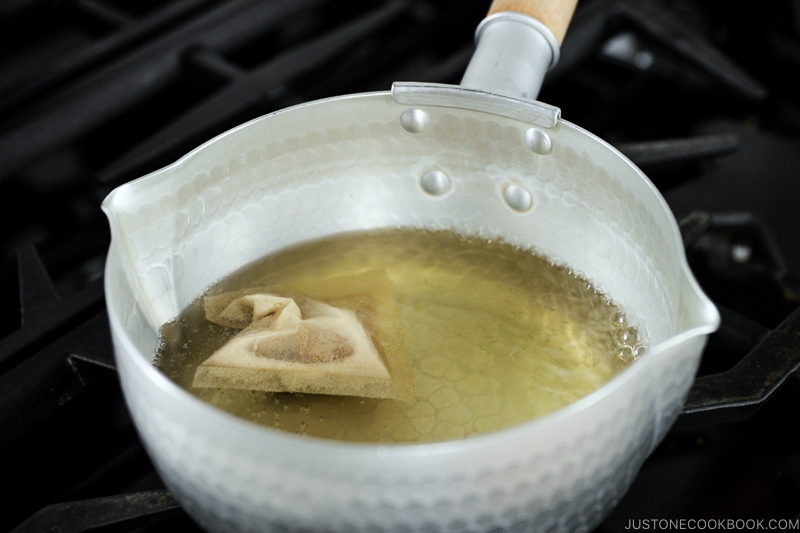
You only need to add 2-3 minutes of cooking time compared to the dashi powder method, but the flavor is much cleaner than dashi powder. Read more about Dashi Packet and How to Use It.
Recipes Using Dashi
Japanese cuisine uses dashi to boost the umami content. Here are some examples of classic Japanese dishes with dashi:
- Miso Soup
- Beef Udon
- Oyakodon (Chicken and Egg Rice Bowl)
- Tamagoyaki (Rolled Omelette)
- Shrimp Tempura
The Ultimate Dashi Guide
Dashi plays a vital flavor enhancer in Japanese cooking, so you don’t need to season the food with salt, fat, and sugar. Dashi is a healthy ingredient in our daily diet, rich in minerals and other vitamins. That’s the secret to the Japanese population’s longevity!
Japanese cuisine uses six types of dashi, including vegetarian and vegan options (*).
- Awase Dashi – a stock made from a combination of dried kelp + bonito flakes
- Kombu Dashi * – a stock made from dried kelp
- Katsuo Dashi – a stock made from dried bonito flakes
- Iriko Dashi – a stock made from dried anchovies/sardines
- Shiitake Dashi * – a stock made from dried shiitake mushrooms
- Vegan Dashi * – a stock made from dried shiitake mushrooms and kombu
If you are new to different types of dashi, check out my Ultimate Dashi Guide.
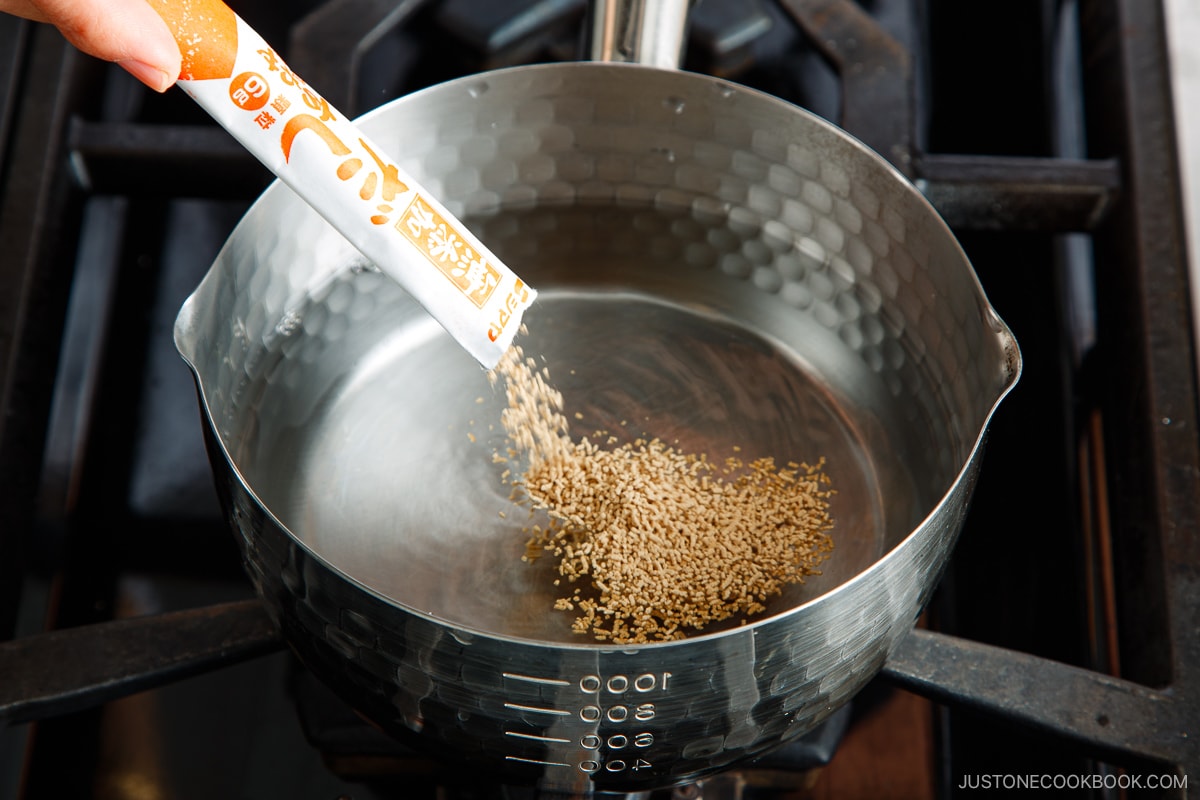
Wish to learn more about Japanese cooking? Sign up for our free newsletter to receive cooking tips & recipe updates! And stay in touch with me on Facebook, Pinterest, YouTube, and Instagram.
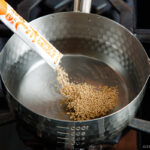
How to Make Japanese Soup Stock with Dashi Powder
Video
Ingredients
- 2 cups water
- 2 tsp dashi powder (1 packet of Shimaya Dashi Powder)
Instructions
- Gather all the ingredients.
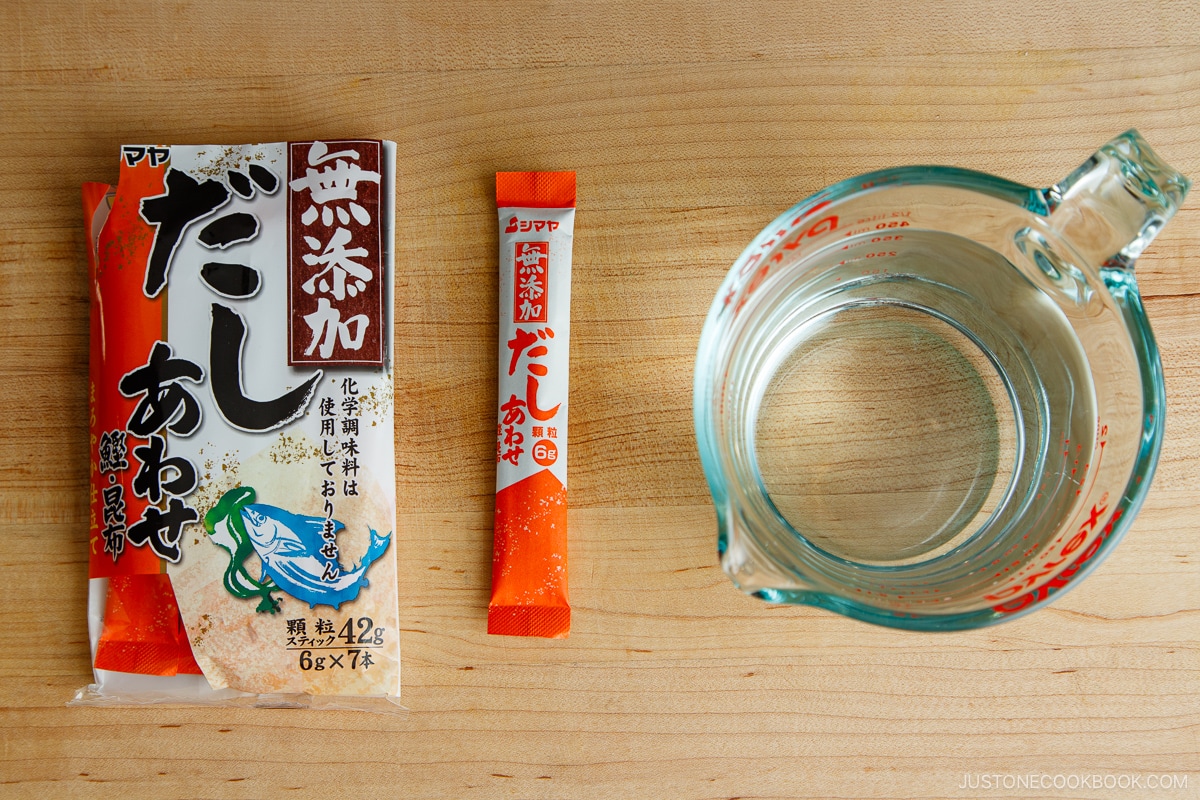
- In a medium saucepan, add 2 cups water and 2 tsp dashi powder.
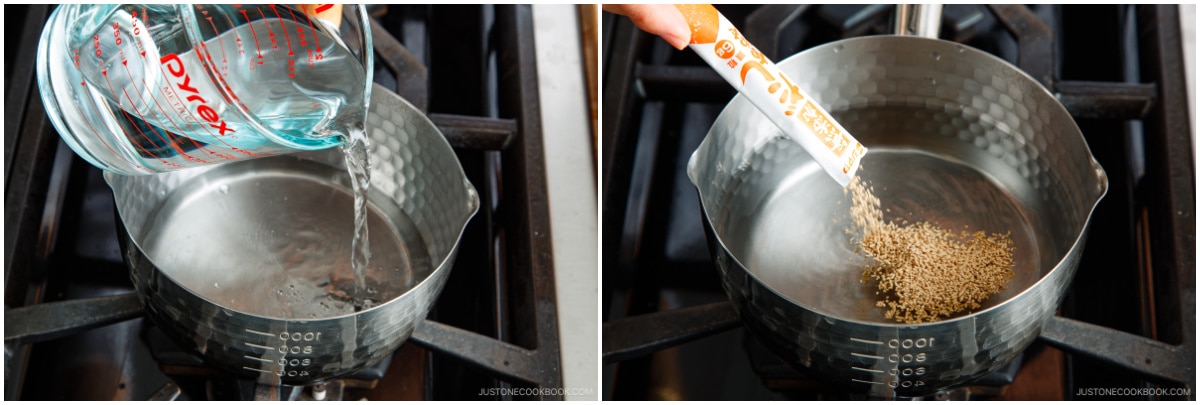
- Stir well and bring it to a boil over medium heat.
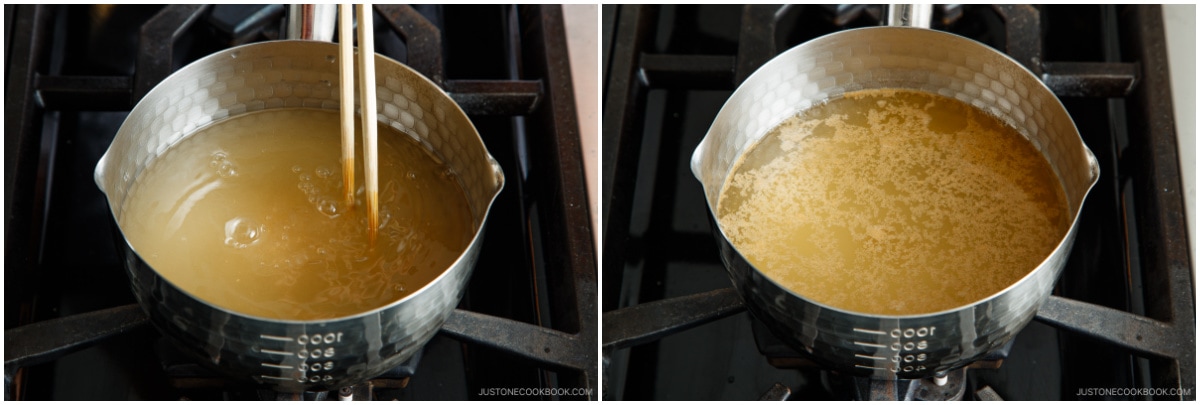
- Once boiling, turn off the heat and the dashi is ready to use. Use it immediately.
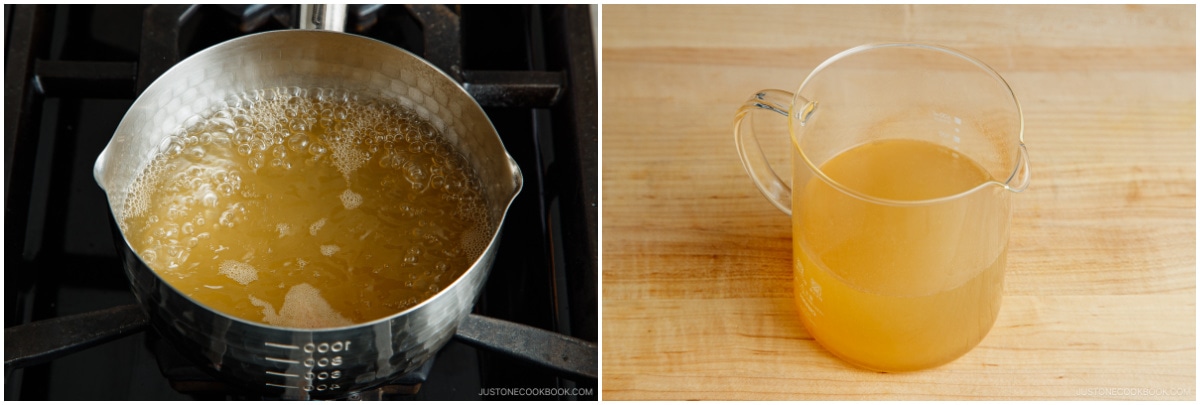
- Tip 1: Note that dashi made with dashi powder contains salt, unlike homemade dashi. I typically avoid dashi powder in my recipes unless specified. Adjust salt, soy sauce, or miso accordingly if you're mindful of your salt intake.Tip 2: I don‘t recommend storing dashi in the refrigerator or freezer.
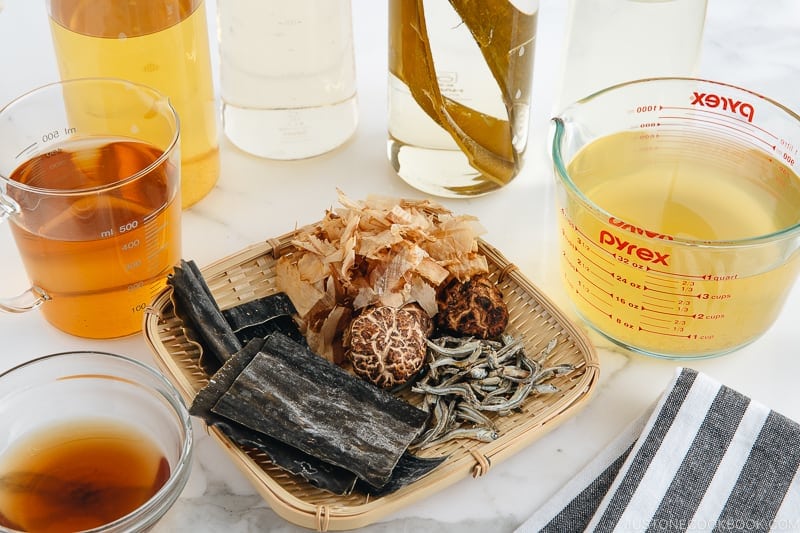
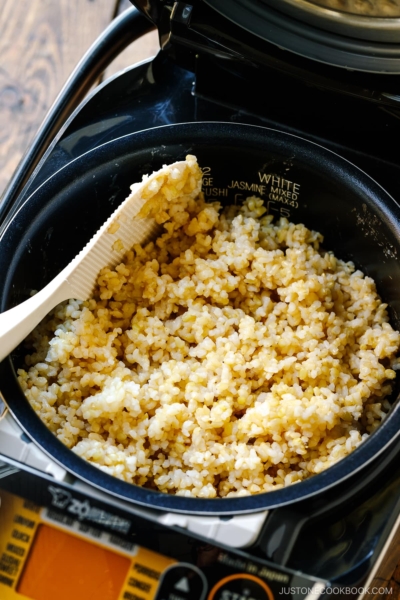
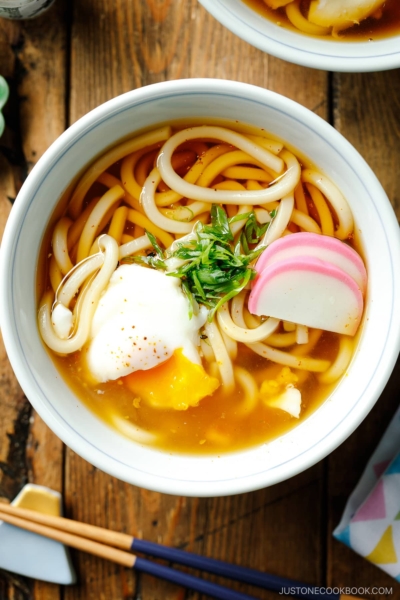
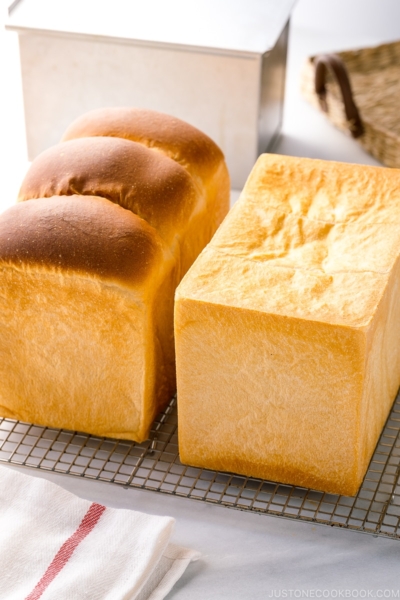
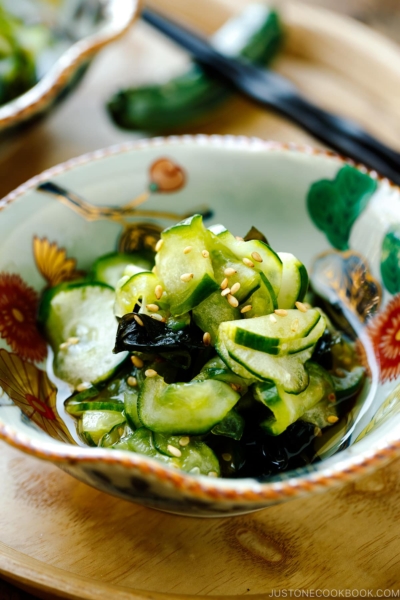




Hi! This recipe is super helpful. Reading Tip #2, it says, “I don‘t recommend storing dashi in the refrigerator or freezer.” Do you know why that is? So if I have leftovers, should I not keep it? Thanks!
Hello there! Thank you for reading Nami’s post and for your kind feedback!
The dashi powder is instant dashi that does not retain the wonderful flavor for long. So we recommend using the powder as needed to make Dashi. We hope this helps!
Can you use this to help make the vegetarian ramen?
Or would you recommend making the dashi following that recipe?
I have loads of Kombu Dashi powder and have no idea what to do with it!
Hello, George. Thank you for trying Nami’s recipes.
You can follow this recipe and use Kombu Dashi powder to make Dashi for the vegetarian ramen.
The basic recipe calls for 2 cups of water and 2 teaspoons of dashi powder. I hope this helps!
Really helpful, thank you!
Hi Cam! Thank you for reading Nami’s post and for your kind feedback!